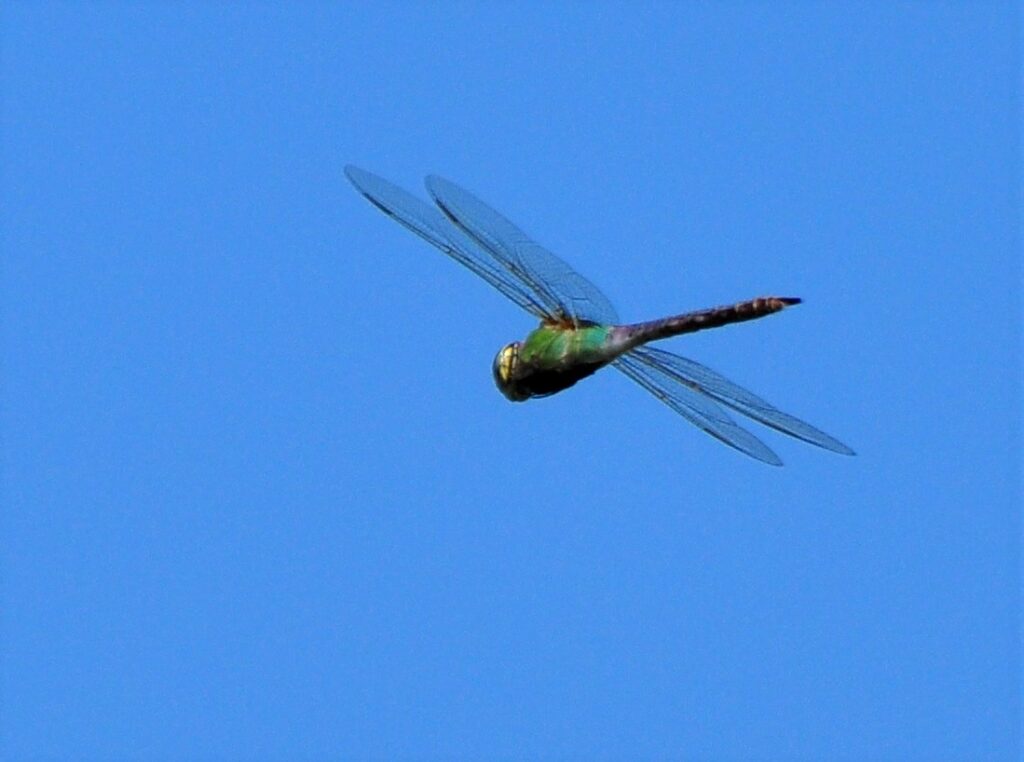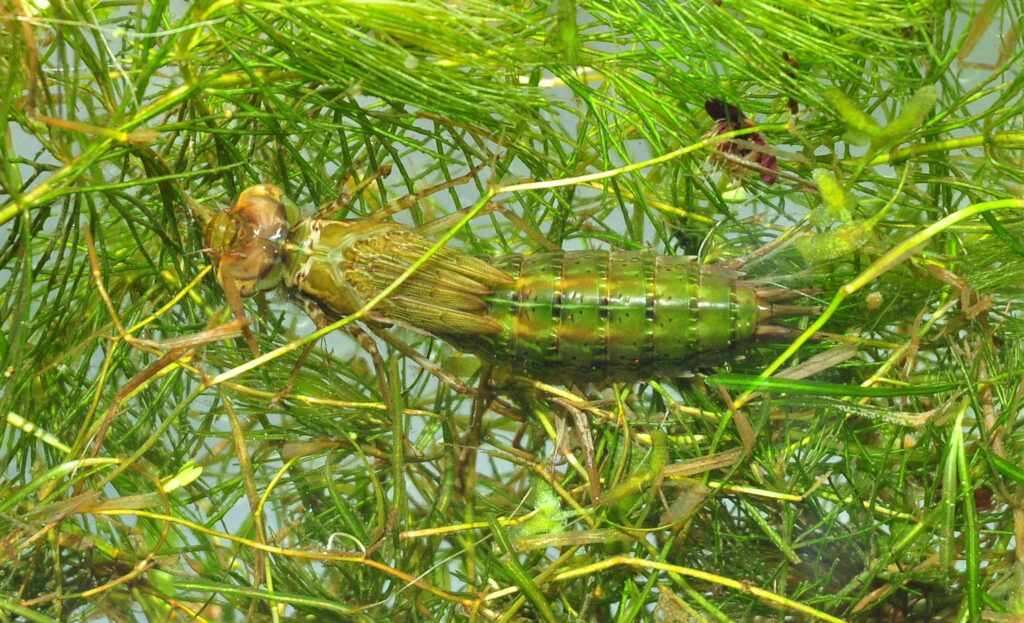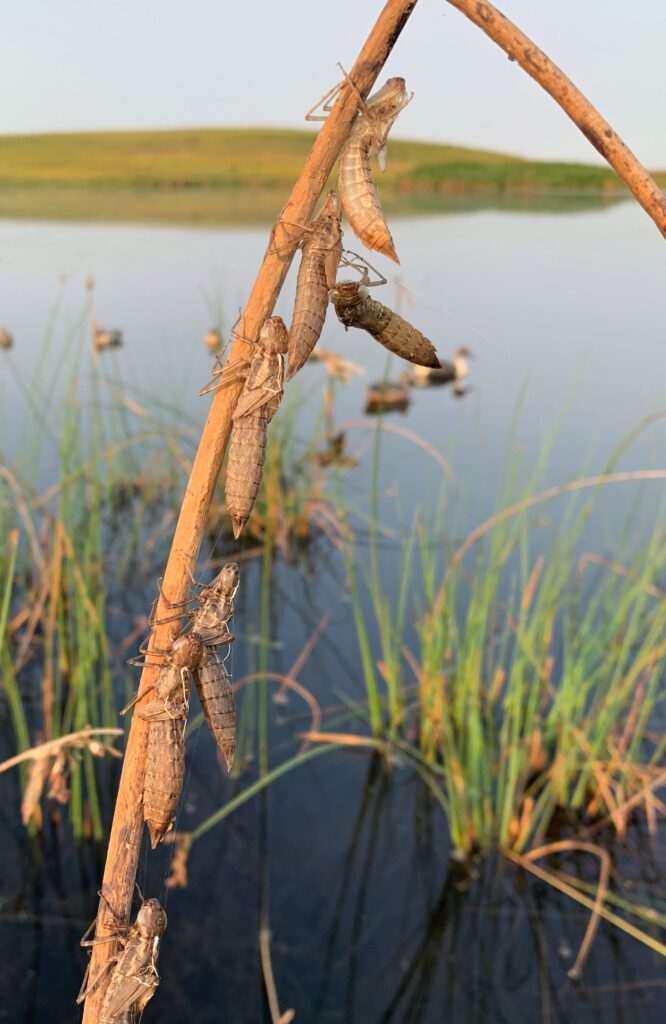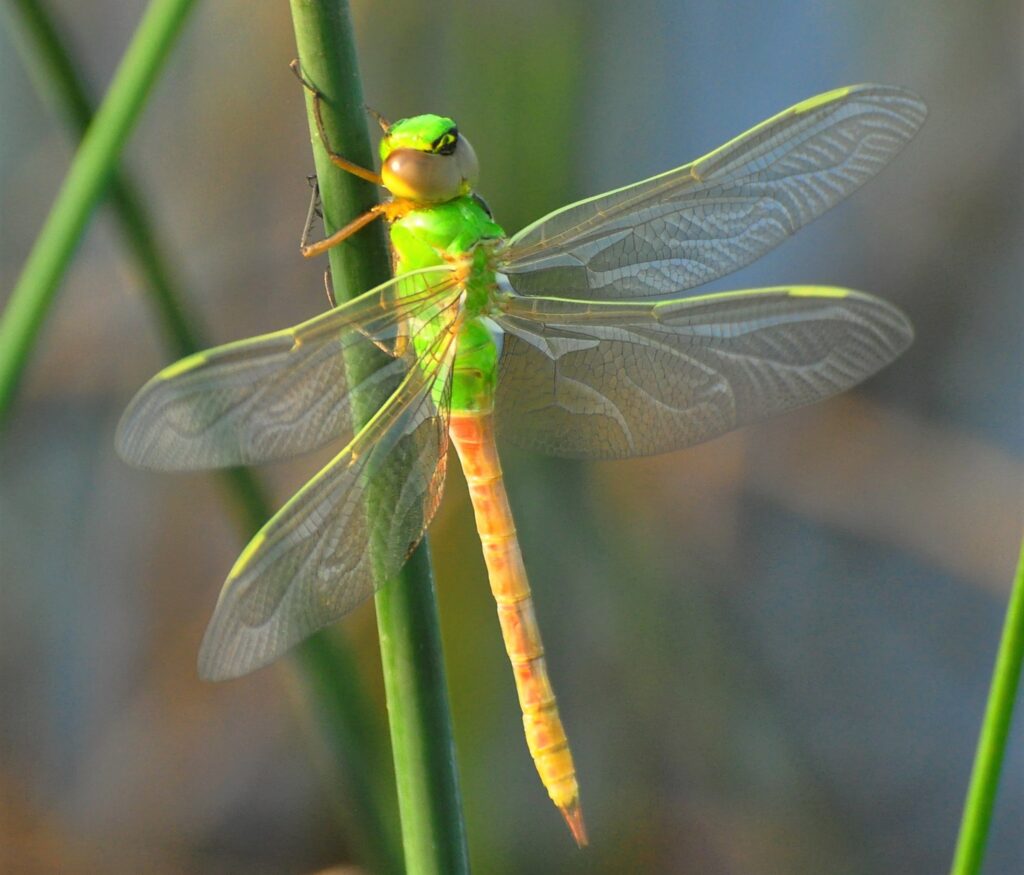Photography courtesy of Lowell Washburn, all rights reserved.
One of the things I enjoy most about Iowa’s early duck seasons – in addition to the ducks, of course – are the sights and sounds provided by the vast diversity of life forms that make the autumn marsh their home.
Some days are more dramatic than others and my latest best example occurred near the end of this year’s teal season. Ducks are most active on breezy mornings, but on this day the waters were dead calm. Although the outing held little promise in the way of hunting, I’ve learned to never sleep in if you have a chance to be on the marsh.
The morning began with a spectacularly colorful sunrise. But as expected, most of the teal were sitting tight. Considering the complete lack of wind, the corresponding lack of ducks came as no surprise. What did come as a surprise, was the giant green darner dragonfly came flying out of the early morning mist. Dragonflies are solar powered insects who usually prefer to lay low until warming sunlight brings their batteries to full charge. Seemed strange to see one on the wing during the coolest hour of the day.

I had just turned my attention back to the decoys when, like a miniature drone, a second darner appeared in the sky. The dragonfly was followed by another, and then another. Connecting the dots, I suddenly suspected that I was in the presence of a classic darner emergence.
Like all dragonflies, darners begin life as underwater nymphs called naiads. Predacious beyond their size, the bright green nymphs prowl the marsh’s mucky bottom devouring almost anything they can get their claws on – mostly other insects – but also bigger game such as tadpoles and small fish. Growing throughout the summer, naiads transform into the familiar adults by early fall.

After spending their entire lives beneath the surface, a whole year class of nymphs may simultaneously leave the water to climb the stems of cattail or other emergent plant life. During their enmass exodus, several naiads may climb the same stalk. Once the climb is complete, the naiad’s skin stretches and then splits down the back as an adult dragonfly emerges. The transformation is no less mysterious or dramatic than when a caterpillar becomes a butterfly.

There are hatches; and then there are hatches. The one I was observing on this occasion would become the largest emergence I have seen firsthand. There may have been hundreds of darners that emerged in the immediate vicinity, and there were probably thousands across the entire wetland complex.
As is the case with emerging butterflies, newly formed adult dragonflies are weak and fragile. Their wings are short, wet, and useless. But the transition from nymph to adult is amazingly rapid as exterior exoskeletons harden and wings grow. The wings of emerging dragonflies mature so rapidly, in fact, that you watch the change. Once the transparent wings are sufficiently cured, the darner takes to skies.
Forever forsaking their underwater lifestyle, adult darners now rule the sky – catching and devouring flying insects with spectacular bursts of speed. Mosquitoes are a favorite target, which is why dragonflies are often referred to as Mosquito Hawks.


 Tom Cope
Tom Cope Sue Wilkinson
Sue Wilkinson Susan Judkins Josten
Susan Judkins Josten Rudi Roeslein
Rudi Roeslein Elyssa McFarland
Elyssa McFarland Mark Langgin
Mark Langgin Adam Janke
Adam Janke Joe Henry
Joe Henry Kristin Ashenbrenner
Kristin Ashenbrenner Joe Wilkinson
Joe Wilkinson Dr. Tammy Mildenstein
Dr. Tammy Mildenstein Sean McMahon
Sean McMahon